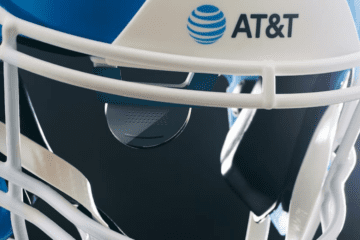Have you ever had an assistant who lived in your computer?
Have you ever shown up for a meeting in your bare feet?
Have you ever studied with a classmate thousands of miles away?
These are some of the questions posed in a series of ads AT&T ran in 1993. The setting was futuristic, and the cinematic mood was set by director David Fincher. The answer at the end of each commercial, in the movie-trailer voice of Tom Selleck: “You Will.”
These predictions were never inevitable. To some, they may have seemed impossible. So how did the scenes get from “Sci-fi” to “So what?” in 30 years? The answer is network providers have invested over $2 trillion in America’s communications infrastructure since 1996, incentivized by smart public policy and a new wave of American entrepreneurs building on top of it. This combination propelled us into the future, gave Americans greater opportunities, fueled economic growth, kept us globally competitive, and made us more secure.
But maintaining these outcomes takes hard work. It took foresight and commitment then from policymakers and the companies who invested to build the infrastructure, and it will take foresight and commitment now, especially as the pace of technological change and temperature of global competition has intensified.
Today, the next wave of innovation is at risk as two issues simultaneously hold America’s networks back.
- Spectrum Shortage: The U.S. has no supply of the licensed spectrum that fuels wireless services, and the FCC has no authority to auction the essential resource. This spectrum drought has allowed other countries, including China, to surpass the U.S. in allocating key portions of spectrum.
- Redundant Networks: Outdated regulations force U.S. telecom companies to maintain inefficient copper networks, diverting investment from the resilient high-speed internet technologies of the future.
Bold policy leaders can reverse course by releasing licensed spectrum, reauthorizing FCC auction authority, and providing a policy foundation wiped clean of old and onerous laws that turn investments away from modern networks toward obsolete copper.
AT&T stands ready to invest in the next set of “anything-is-possible” predictions about what “you will” be able to do in the years to come. It’s not just about faster internet speeds. It’s about unlocking opportunities for every American, propelling our country into a new golden age of prosperity and security.
Unleashing Wireless Innovation with Spectrum
Expanding our network requires expanding access to the licensed spectrum that powers it. These invisible airwaves fuel the unprecedented growth in data traffic driven by the devices and services the “You Will” commercials once visualized: cellphones, tablets, smartwatches, chatbots, videoconferencing, telehealth and the uncountable ways technology has evolved in the last 30 years.
Americans’ bandwidth, speed and coverage demands will intensify over the next generations of devices and services. Modern mobile networks that enable personalized AI agents, augmented reality applications, autonomous health care assistance, self-driving cars and aerial vehicles require the portions of spectrum that global competitors and adversaries are wisely allocating to their wireless service providers in droves. In the U.S., this essential resource is being underused due to a lapse in policy leadership; it’s time to rectify that.
The private sector cannot acquire the spectrum it needs in the U.S. until Congress reauthorizes the FCC to conduct auctions and the government allocates more full-power mid-band spectrum for licensed commercial use. Without auctions and a pipeline, the American people get left behind and American leaders get left with no leverage to negotiate internationally.
Unlocking Investment in Modern Networks
Outdated laws that force investment in old technology must be revised so that resources are focused on modern networks. In dramatic fashion, consumers have largely abandoned older telecommunication products for more capable, modern services. To ensure we keep pace with consumer demand, we outlined plans to expand AT&T Fiber and phase out copper-based services across most of our footprint by 2029. We’re committed to ensuring no customer will lose voice or 911 service during this transition. We’re also proud to offer AT&T Phone – Advanced, a new product that meets FCC requirements to replace traditional landlines. It uses broadband or wireless service to connect customers like a landline would.
It will take close work with state and federal policymakers to shift from outdated regulatory frameworks that overly prioritize traditional copper networks while ensuring customers stay connected. Everyone involved in the transition must work together toward more resilient, efficient and secure networks that are necessary to keep our country connected.
We must also understand that much more than “better internet” is at stake in this transformation. In a globalized world, staying competitive means staying connected. It’s not just an upgrade; it’s a necessary evolution to protect the nation.
Laying New Groundwork for Global Technology Leadership
As we look back at the bold predictions of the “You Will” ads, it’s clear that what once seemed amazing is now mundane. This transformation was made possible by visionary investments and forward-thinking policies that laid the groundwork for a connected, competitive, and secure America.
But the challenges we face now—a critical shortage of licensed full-power mid-band spectrum and outdated regulations—threaten to stall our progress. We need forward-looking policymakers to help America achieve the next wave of technological advancements and safeguard America’s standing on the global stage.





